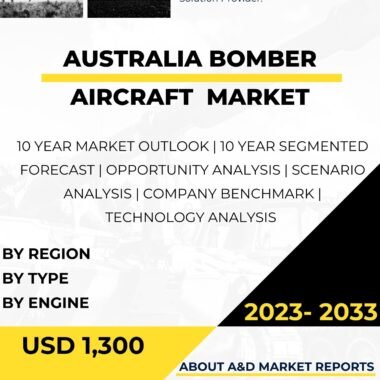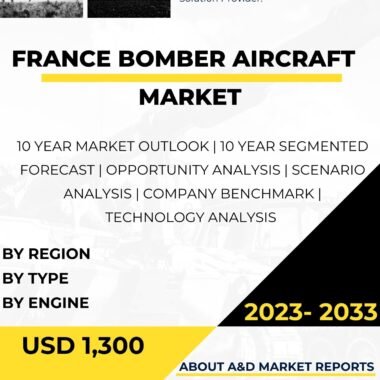Description
Bomber aircraft are a vital component of the United States’ military aviation arsenal, providing the nation with strategic strike capabilities and the ability to project power across the globe. These advanced aircraft are designed to deliver ordnance, such as bombs and missiles, to engage enemy targets with precision and devastating firepower. Bomber aircraft serve various roles, from nuclear deterrence to conventional strike missions, and they play a significant role in supporting the nation’s defense and military operations. This article will explore the development, types, capabilities, and significance of U.S. bomber aircraft in the nation’s military strategy.
The development of U.S. bomber aircraft can be traced back to the early 20th century, when military aviation was in its infancy. During World War I, the U.S. Army Air Service deployed a limited number of bomber aircraft for tactical support and reconnaissance missions.
In the interwar period, strategic bombing concepts gained traction, and the U.S. military began to recognize the potential of bomber aircraft in achieving strategic objectives. The introduction of long-range, multi-engine bombers, such as the B-17 Flying Fortress and the B-29 Superfortress, during World War II marked a significant advancement in U.S. bomber capabilities.
The B-17 and B-29 played crucial roles in the air war over Europe and the Pacific, delivering precision bombing and strategic attacks on enemy targets, including industrial facilities, infrastructure, and military installations.
After World War II, the development of jet-powered bombers accelerated, leading to the introduction of iconic aircraft such as the B-52 Stratofortress and the B-47 Stratojet.
The B-52, introduced in the 1950s, has become a symbol of U.S. strategic airpower. With its long-range capabilities and heavy payload, the B-52 became the backbone of the U.S. Air Force’s bomber fleet, providing nuclear deterrence during the Cold War and serving as a versatile platform for conventional missions.
The B-47, on the other hand, was the U.S. Air Force’s first swept-wing, jet-powered bomber. It was designed for high-speed, high-altitude flight and was the first U.S. bomber capable of carrying nuclear weapons for strategic deterrence.
As the Cold War intensified, the U.S. military continued to invest in advanced bomber aircraft, leading to the development of the B-58 Hustler, the world’s first supersonic bomber. The B-58 was designed to deliver nuclear weapons at supersonic speeds, giving the U.S. Air Force a rapid and flexible strike capability.
In the 1980s, the U.S. Air Force introduced the B-1B Lancer, a long-range, swing-wing bomber optimized for high-speed, low-level penetration missions. The B-1B was designed to carry nuclear and conventional payloads and became a crucial asset in the U.S. military’s conventional strike capabilities.
In the late 20th century, the U.S. military shifted its focus to stealth technology, leading to the development of the B-2 Spirit, the world’s first operational stealth bomber. The B-2 is designed to evade enemy radar detection, allowing it to penetrate heavily defended airspace and deliver precision strikes with a wide range of munitions.
Today, the U.S. Air Force operates a diverse fleet of bomber aircraft, including the B-52H Stratofortress, the B-1B Lancer, and the B-2 Spirit. Each bomber platform offers unique capabilities and complements the others in supporting various military missions.
The B-52H, the most numerous and oldest operational bomber in the U.S. fleet, provides global strike capabilities, capable of carrying both nuclear and conventional payloads. Its extended range and large payload capacity make it a versatile and enduring platform for a wide range of military operations.
The B-1B Lancer is known for its supersonic speed, long range, and ability to carry a variety of munitions. It has been extensively used in various conflicts, demonstrating its capabilities in conventional strike missions.
The B-2 Spirit, with its stealth technology, enables it to operate in highly contested environments, making it ideal for strategic deterrence and specialized strike missions.
In addition to traditional bomber roles, U.S. bomber aircraft also play a significant role in nuclear deterrence. As part of the nation’s nuclear triad, bombers provide a flexible and visible means of demonstrating the U.S.’s commitment to its nuclear defense posture.
The significance of U.S. bomber aircraft lies in their ability to provide strategic strike capabilities and support the nation’s defense and security objectives. Bombers offer the U.S. military the ability to strike distant targets rapidly and with precision, enabling the U.S. to project power and protect its interests worldwide.
The U.S. Air Force’s bomber fleet also contributes to regional stability by providing a visible presence and rapid response capabilities. Bomber deployments and flyovers serve as signals of deterrence and reassurance to allies and potential adversaries alike.
Furthermore, bomber aircraft offer the U.S. military the ability to conduct a variety of missions, ranging from strategic nuclear deterrence and global strike operations to humanitarian assistance and disaster relief efforts.
The development and modernization of U.S. bomber aircraft involve continuous research and investment in cutting-edge technologies. The U.S. Department of Defense (DoD) collaborates with defense contractors, such as Boeing, Northrop Grumman, and Lockheed Martin, to enhance bomber capabilities and address emerging challenges and threats.




